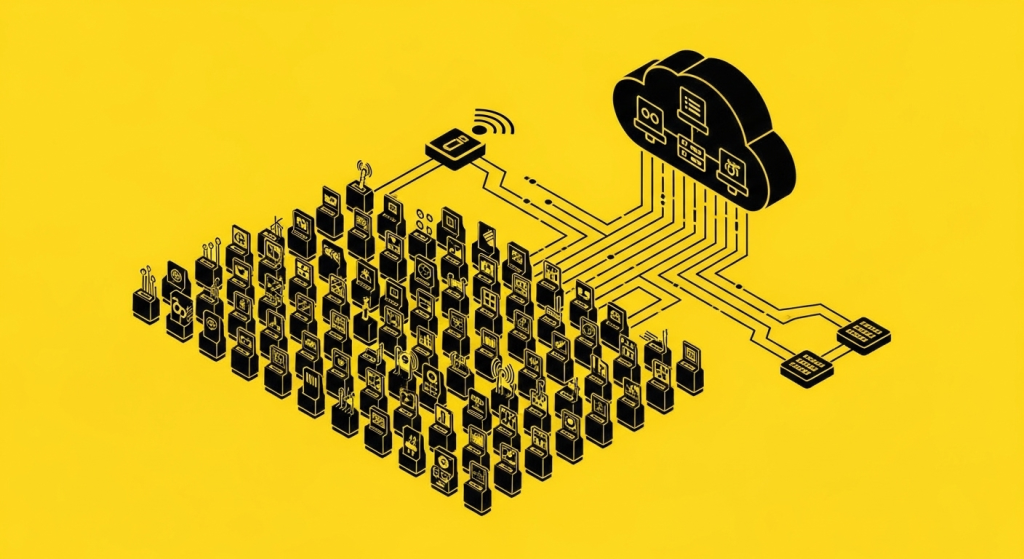Connectivity is where many IoT programs quietly bleed money, missed data, dead batteries, flaky updates, support tickets, angry customers. The winners treat connectivity like a product within the product: designed, measured, and improved with the same rigor as UX or unit economics.
This piece gives you the essentials:
- The real-world connectivity problems and how to de-risk them.
- A comparison of the common protocols.
- The scaling playbook used by teams who ship thousands, not dozens of devices.
1) The Field failures you can predict and prevent
A) Interference you can’t see
Symptoms: Metal cabinets, crowded apartment buildings, and moving assets all punish wireless links. When the connection drops, devices start retrying and your cloud fills with noise, not data.
Countermeasures:
- Devices are designed with margin: extra signal strength and smart retry strategies.
- There’s always a “plan B” path to deliver critical data (e.g., store-and-forward).
- You can see reliability as a KPI (online rate, median latency) per region and carrier.
B) Battery life (it’s usually the radio)
Symptoms: A single design choice, like frequent “keep-alive” pings, can take a device from 5 years to 5 months. Radio time is battery time.
Countermeasures:
- Devices send fewer, richer messages (batching), not constant chatter.
- Power-saving modes are on by default (cellular sleep modes, BLE intervals).
- Firmware updates are small and staged, so you don’t drain fleets by accident.
C) Security (without bricking fleets)
Symptoms: Copy-pasted passwords and one shared certificate are a time bomb. But locking it down too hard can block updates.
Countermeasures:
- Every device has its own identity (its own certificate or key).
- Updates are signed, staged, and reversible (automatic rollback).
- Secrets rotate automatically; you don’t need heroics to re-key 10,000 devices.
2) Picking the right connectivity (no alphabet soup)
Think of protocols as logistics options: bike, van, train, jet. Each excels in a different job.
| If your product needs… | Best fit (first pick) | Why |
| Multi-year battery + tiny messages (environmental sensors) | LoRa/LoRaWAN or NB-IoT | Long range, very low power, small payloads |
| Mobile assets + regular firmware updates (trackers, wearables) | LTE-M (Cat-M1) | Designed for movement; decent bandwidth |
| Pairs to a phone or hub (peripherals, wearables) | Bluetooth Low Energy (BLE) | Power-frugal, works great with phones |
| High bandwidth on mains power (appliances, cameras) | Wi-Fi | Fast and everywhere indoors |
Many winning products are hybrids: BLE for local control + LTE-M for cloud backhaul; or LoRa to a site gateway that uses Ethernet upstream. Don’t force one pipe to do every job.
3) Your scaling playbook (business outcomes first, tech follows)
A) Provisioning & identity that won’t bite later
- Decision: Each device ships with a unique key/certificate.
- Outcome: Zero-touch onboarding at the customer site; revocation is possible if a unit is stolen.
B) Messaging that’s cheap and dependable
- Decision: Use a lightweight protocol (MQTT/CoAP) with the right “quality of service,” and batch messages.
- Outcome: Lower data bills, fewer retries, cleaner analytics.
C) Updates that won’t take the fleet down (OTA)
- Decision: A/B partitions, signed builds, and rollouts in rings (1% → 10% → 50% → 100%).
- Outcome: Bugs don’t become headlines. Rollback is a button, not a prayer.
D) Observability: treat connectivity like a P&L line
- Track per cohort (carrier, hardware rev, geography):
- 24-hour online rate
- p50/p95 message latency
- Data per device per day (MB)
- Battery slope (mV/day)
- OTA success rate/time
- Outcome: You see issues early, tie them to dollars, and know where to fix first.
E) Resilience patterns that feel “boring” (in the best way)
- Devices follow a simple state machine (BOOT → CONNECT → SEND → SLEEP) with timeouts and backoff.
- Everything jittered in time so 10,000 devices don’t reconnect at once.
4) What success feels like
- Cold-chain sensors (multi-year battery): LoRa sensors wake hourly, batch readings, and sleep. A site gateway relays data via Ethernet. Battery estimates are boringly accurate.
- Fleet tracker (mobile + OTA): LTE-M gives reliable movement and manageable firmware sizes. Devices send summaries by default; raw logs only on demand.
- Smart appliance (mains power): Wi-Fi handles richer data; overnight ringed updates avoid support spikes. Customer app shows last-known state even when temporarily offline.
5) Questions to ask your team this week
- Identity: “Does every device have its own credential, and can we revoke it?”
- OTA safety: “Can we roll back automatically if an update misbehaves?”
- Data efficiency: “What’s our average messages per device per day—and why?”
- Battery forecast: “Show me predicted vs. actual life in the field, by cohort.”
- Connectivity KPIs: “What’s our online rate and p95 latency by region/carrier?”
- Hybrid plan: “Are we forcing one protocol to do everything?”
The takeaway
There’s no “best” protocol, only the right one for your use case. The companies that win at IoT don’t gamble on RF luck: they engineer margin, design for silence (fewer messages), and automate the unglamorous work, identity, updates, and observability. Do that, and your devices won’t just connect in the lab they’ll stay connected with customers who depend on them.
FAQ
What’s the difference between NB‑IoT and LTE‑M for OTA?
NB‑IoT optimizes for small, infrequent payloads; LTE‑M supports mobility and larger updates. Use LTE‑M when regular OTA is a requirement.
How do I forecast battery life from logs?
Track average wake time and battery slope per cohort. Changes in wake time correlate directly with life; validate with power measurements.
Which MQTT QoS should I use?
QoS 1 for telemetry you must deliver eventually, QoS 0 for non‑critical debug, and QoS 2 only when duplicates are unacceptable and volume is low.
How do A/B slots prevent bricking?
The device boots the new slot only if health checks pass. On failure, it automatically rolls back to the previous known‑good image.
Can I mix protocols?
Yes. Hybrids are common: BLE ↔ phone for local control with LTE‑M for cloud, or LoRa to a gateway that uplinks over Ethernet/cellular.



